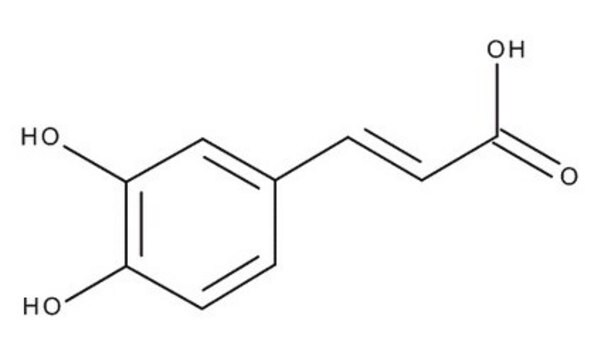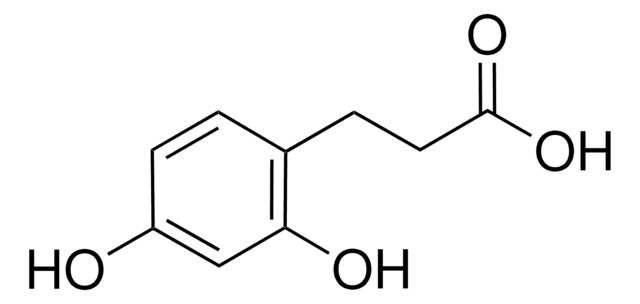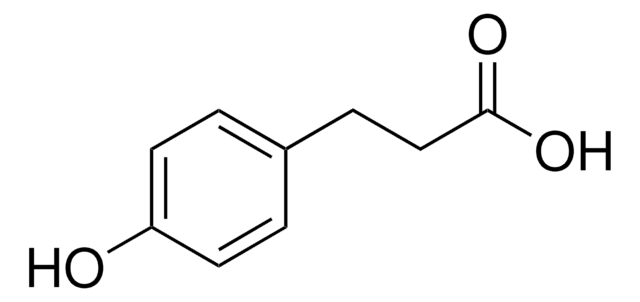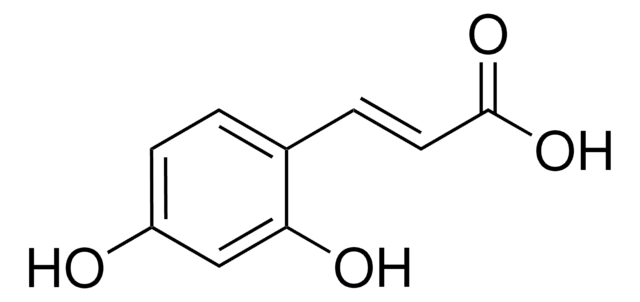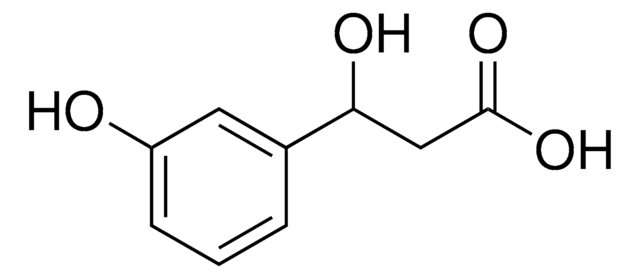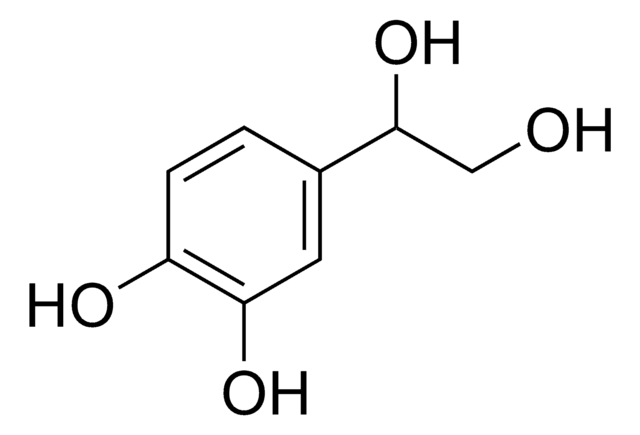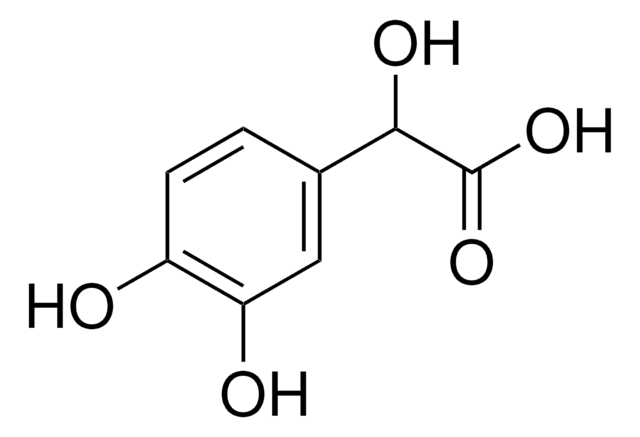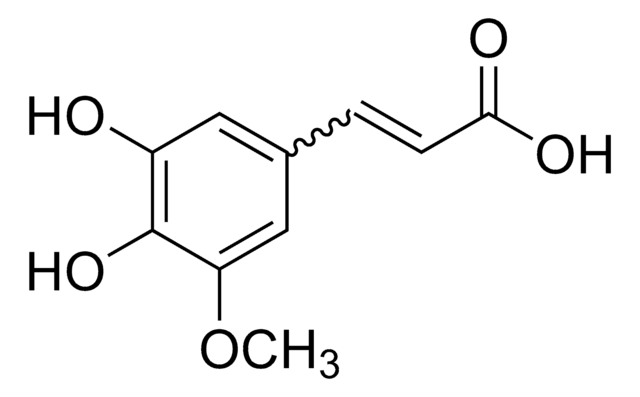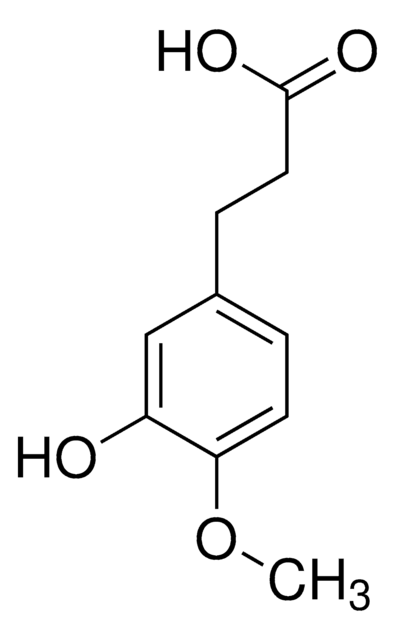Wichtige Dokumente
102601
3,4-Dihydroxyhydrozimtsäure
98%
Synonym(e):
3-(3,4-Dihydroxyphenyl)-propionsäure, Hydrokaffeesäure
About This Item
Empfohlene Produkte
Assay
98%
mp (Schmelzpunkt)
136-139 °C (lit.)
SMILES String
OC(=O)CCc1ccc(O)c(O)c1
InChI
1S/C9H10O4/c10-7-3-1-6(5-8(7)11)2-4-9(12)13/h1,3,5,10-11H,2,4H2,(H,12,13)
InChIKey
DZAUWHJDUNRCTF-UHFFFAOYSA-N
Suchen Sie nach ähnlichen Produkten? Aufrufen Leitfaden zum Produktvergleich
Verwandte Kategorien
Allgemeine Beschreibung
Anwendung
It can also be used for thesurface functionalization of nanoparticles. The functionalization with DHCA notonly improves the water solubility of nanoparticles but also provides a platformfor further modification due to the presence of surface carboxyl groups.
Signalwort
Warning
H-Sätze
Gefahreneinstufungen
Eye Irrit. 2 - Skin Irrit. 2 - STOT SE 3
Zielorgane
Respiratory system
Lagerklassenschlüssel
11 - Combustible Solids
WGK
WGK 3
Flammpunkt (°F)
Not applicable
Flammpunkt (°C)
Not applicable
Persönliche Schutzausrüstung
dust mask type N95 (US), Eyeshields, Gloves
Hier finden Sie alle aktuellen Versionen:
Besitzen Sie dieses Produkt bereits?
In der Dokumentenbibliothek finden Sie die Dokumentation zu den Produkten, die Sie kürzlich erworben haben.
Kunden haben sich ebenfalls angesehen
Unser Team von Wissenschaftlern verfügt über Erfahrung in allen Forschungsbereichen einschließlich Life Science, Materialwissenschaften, chemischer Synthese, Chromatographie, Analytik und vielen mehr..
Setzen Sie sich mit dem technischen Dienst in Verbindung.